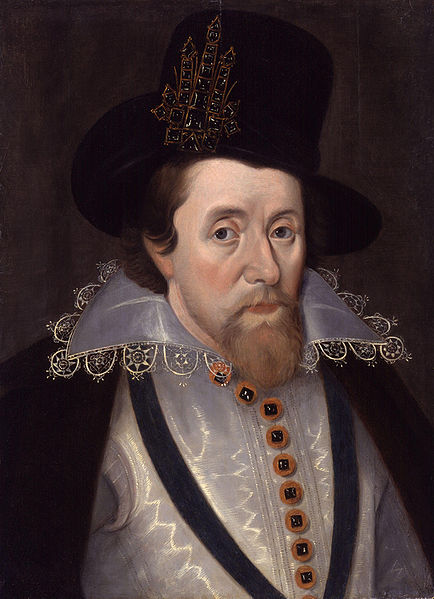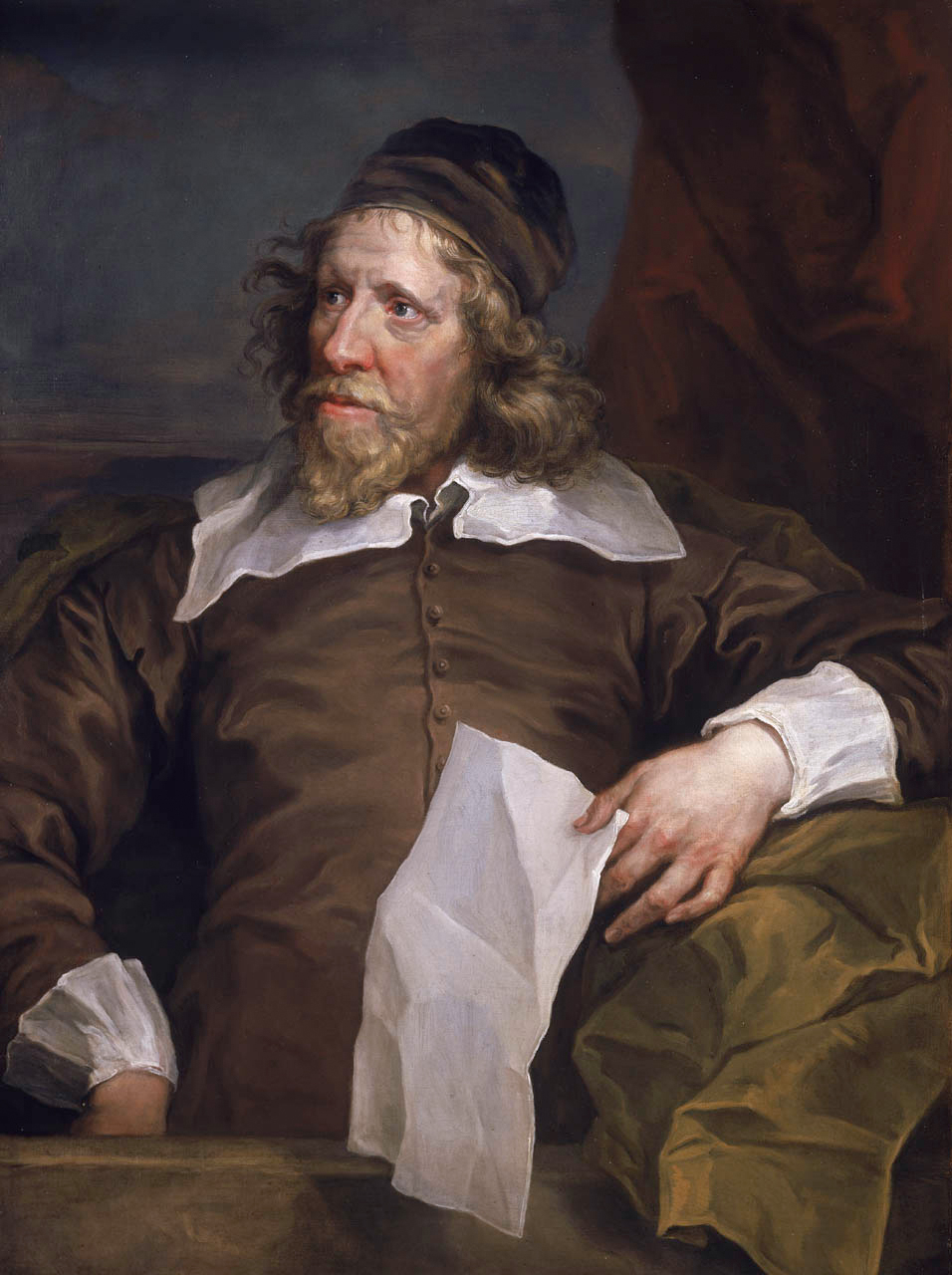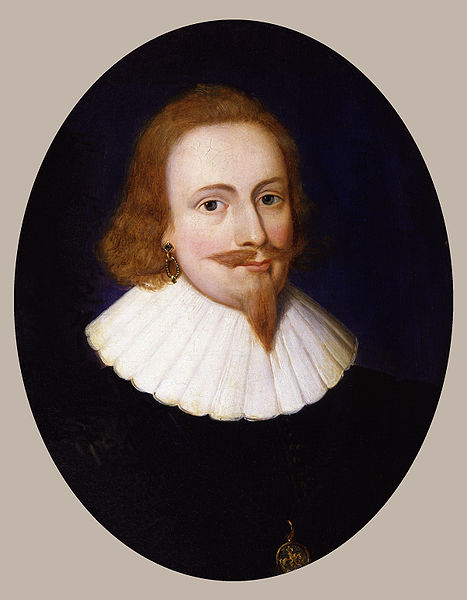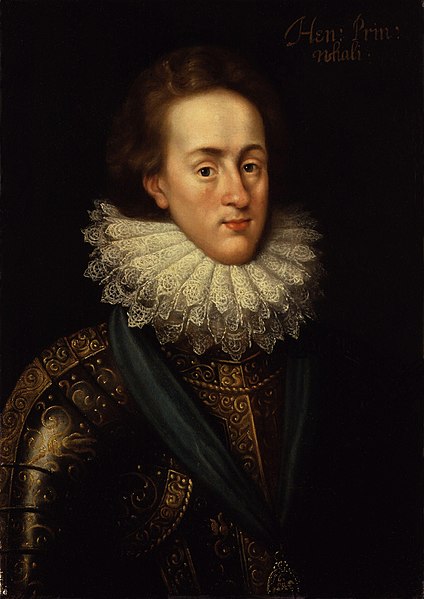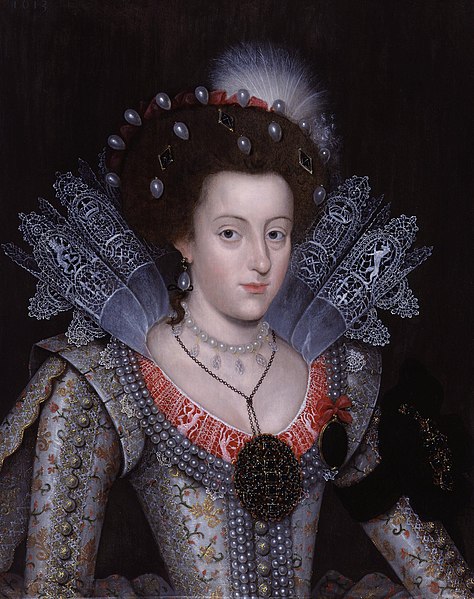Politics Rears its Ugly Head
.jpg) |
| Robert Cecil |
‘My Lord Treasurer’s malady
doth daily increase………..He hath besides an ague, a
deflation of rheum on
his stomach, and withal difficultum respirandi………..his Lordship must shortly
leave this world.’[ii]
Robert Cecil
died 24th May 1612, worn out by continuous service to his
sovereigns. The race was now on to fill the posts left vacant by Cecil’s death.
Francis Bacon first thought to become Master of the Wards in Cecil’s place, but was later
given the post of Attorney General.
The new or Addled Parliament in 1614 was accounted a troublesome one by Francis
Bacon for its high proportion of new members.
But the main root of James’ problems was the inexperience of his new
servants; Cecil’s ability to manage men was much missed by his erstwhile
master. Ralph Winwood[iii] was chosen as Secretary
for State and the new Speaker of the House had not sat therein for over twenty
years.
James’
friendship with the Spanish ambassador, who knew how to make James laugh and went
hunting with the king, made his subjects fear that James was plotting to bring
back the Catholic religion. James’ speech to the parliament promising some
tolerance of Catholics did nothing to appease those fears.
The Commons
became;
‘More fiery and violent in
their speeches.’[iv]
They attacked
the Bishop of Lincoln when he suggested that their
arguments were seditious. In turn Christopher Neville denounced the court for
corruption. James, who had been hoping for an increase in his finances,
eventually gave up in despair and dissolved parliament. 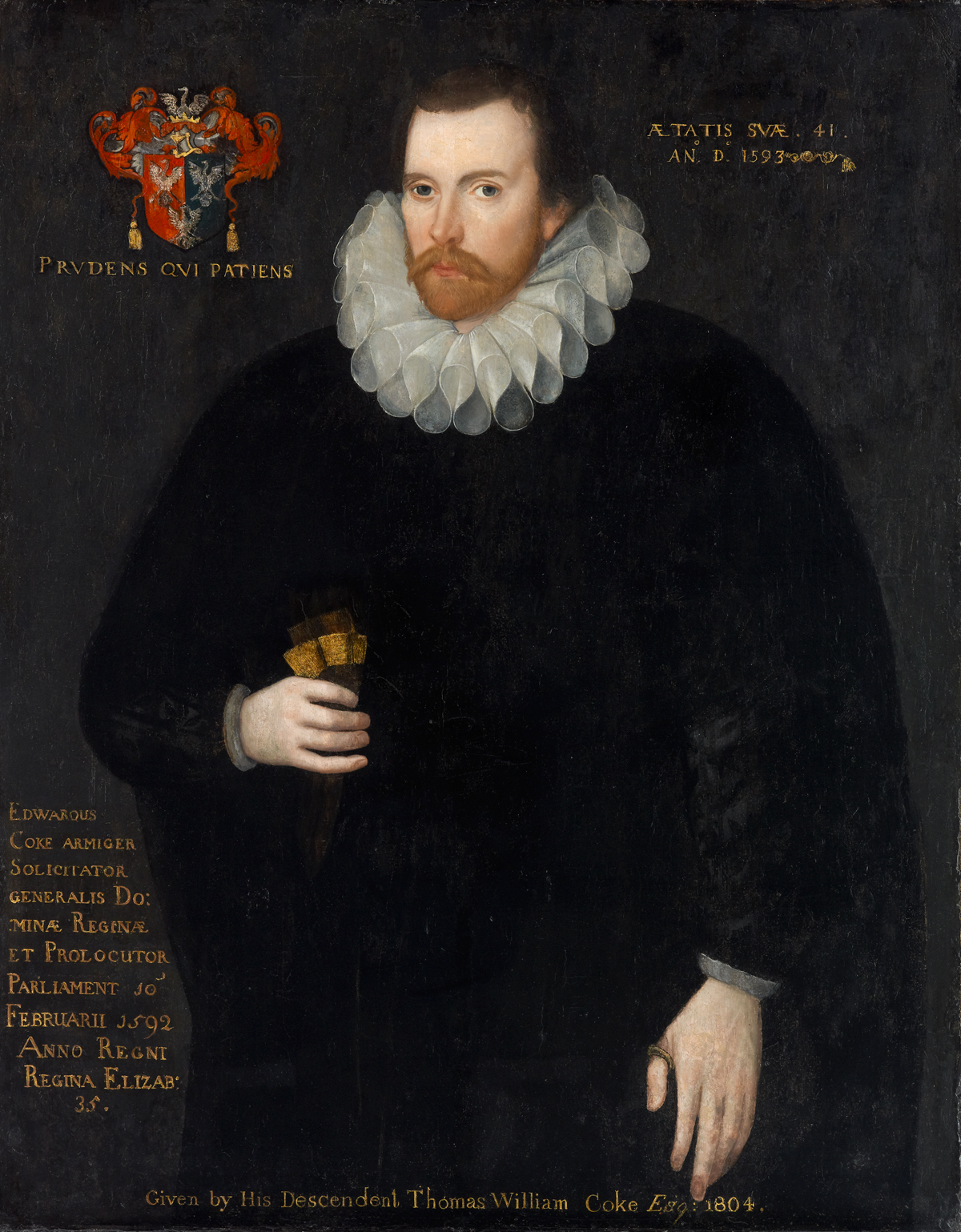 |
| Edward Coke |
Many of the
members had been lawyers and James was incapable of appreciating the English
system of Common Law, much of it developed by Edward Coke who was made Chief Justice of the Court of Common
Pleas in 1606.
Murder She Decreed
Ralph Winwood
was a tool of the rapacious Howard family[v] who, joined by Carr, had
great influence over James. The Howards had been fortunate in their early
espousal of James[vi]
and the alliance with Carr was the result of his marriage to Frances Howard of
whom John Donne wrote;
‘First, her eyes
kindle other ladies’ eyes
Then from those beams
their jewels’ lustre rise;
And from their jewels
torches do take fire;
And all is warmth and light and good desire.’[vii]
Howard was a
ruthless woman who had already besmirched the reputation of her former husband
the Earl of Essex on the grounds that he was incapable
of consummating their marriage.
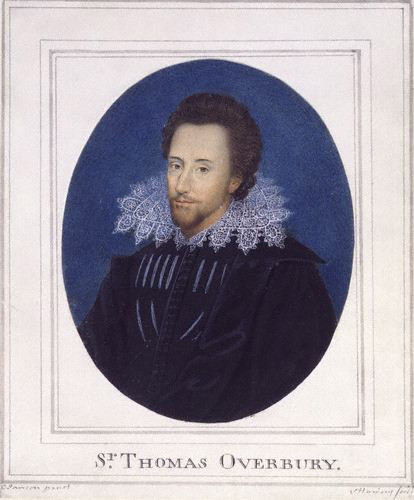 |
| Thomas Overbury |
At a time
when the king was not popular a lurid murder caught the public imagination. Sir Thomas Overbury, a confidant of the favourite, was poisoned. Overbury
had opposed the marriage to Frances, fearing that his own influence with Carr
would be much diluted by the Howards. More foolishly Overbury wrote and
disseminated a poem called A Wife, capitulating the virtues a young man should
look for in his wife.
James was
pressured into offering Overbury a diplomatic post as ambassador to Russia; an
offer that Overbury declined. James was further pressured into having Overbury
arrested on 22nd April 1613 and thrown into the Tower. During his
time in prison Overbury was gradually poisoned with a series of jellies sent by
Howard. He died on 14th September 1613. Francis Bacon and Edward
Coke were charged with investigating the murder. After four accomplices were
convicted and hung, Frances confessed.
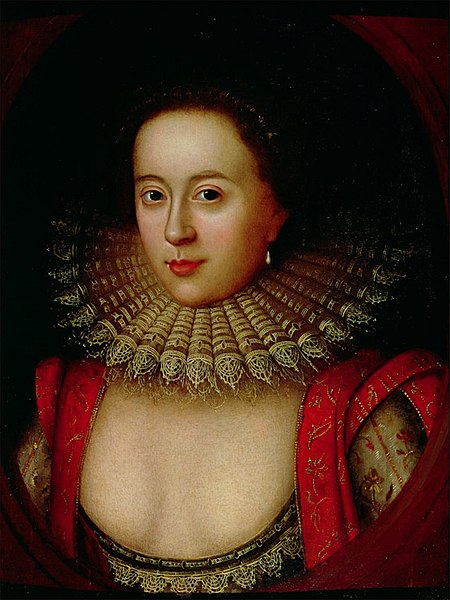 |
| Frances Howard |
Both
Somerset and his new wife were tried for the murder and both were sentenced to
death. James commuted the sentence to life imprisonment and the couple were
kept in the Tower until January 1622[viii]. The king was tainted
by association, although it would appear that Carr was probably innocent of the
crime.
A New Favourite
The Howard family
were about to lose the hold they had on the king. There arose a new favourite,
another pretty boy, George Villiers. It is highly possible that he was
introduced to James in an attempt to overthrow Carr’s hold on the king’s
affections.
Villiers’
rise was meteoric; he met the king in 1614 and was appointed Cupbearer, he was
knighted in 1615 and made Gentleman of the Bedchamber with a grant of £1,000 per annum[ix], in 1616 he was made Master of the Horse, at the age of 24 he became a Knight of the Garter and created Baron Whaddon and
Viscount Villiers. Villiers was made Earl of Buckingham and a Privy Counsellor in
1617. In 1619 Villiers was made Marquess of Buckingham and was finally made
Duke of Buckingham in 1623.
‘The king sold his
affections to Sir George Villiers, whom he would tumble and kiss as a mistress.’[x]
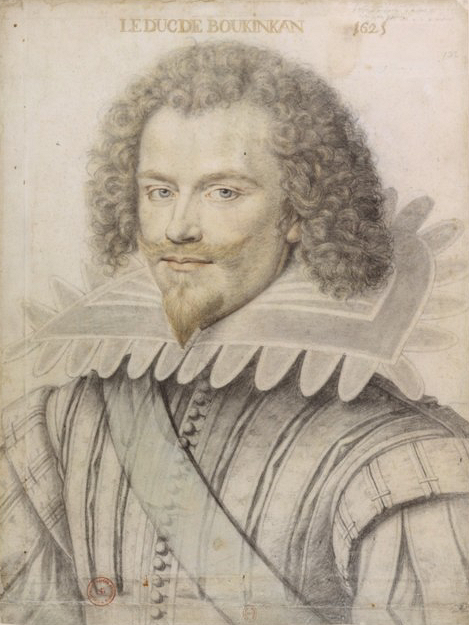 |
| George Villiers |
‘Never yet saw any fond
husband make so much or so great dalliance over his beautiful spouse as I have
seen King James over his favourites, especially the Duke of Buckingham.’[xi]
Villiers was
originally considered ‘a modest and
courteous youth’ but, like many a
favourite before and after, that soon changed. He was not modest, and
apparently never had been, and the courtesy was soon lost on his rise to power.
Even the queen approved, writing to him;
‘My Kind Dog[xii]
you do very well in lugging the Sowe’s [king’s] eare, and I thank you for it,
and would have you do so still, upon condition that you continue a watchful dog
and be always true to him. So wishing you all happiness.’[xiii]
Anne was
relieved to be released from being dragged around the kingdom on royal
progresses.
There was
one person at court who was not part of the George Villiers appreciation club.
The 19 year old 5’ 4” Prince Charles was overshadowed by the tall and
commanding favourite. Charles resented Villiers and once twisted a water spout
so that it spurted on Villier’s gorgeously clothed back; another time the pair
came to blows on the tennis court.
But even Charles
could not long resist the favourite’s spell and ‘sweet Steenie’ and ‘baby
Charles’ soon formed an intense friendship that owed nothing to sexuality; a
friendship that was to last until Villier’s death.
Finances Again
 |
| Lionel Cranfield |
In 1621 Lionel Cranfield was made Lord High Treasurer; a new
policy of rationalising tariffs increased James’ income by £30,000 per annum[xiv]. Cranfield believed that
James’ current expenditure should not imperil his future income and therefore
assignments on revenue should be loans not gifts.
In June 1618
Cranfield persuaded James to agree to his regulations for running the Wardrobe[xv]. Cranfield managed to
almost halve the Wardrobe’s expenditure, arousing opposition having, in his
words, reduced;
‘Only their stealing and
thieveries.’[xvi]
Naval
expenses were remarkable for the scandalous speculation, bribery and waste; the
Howard Lord High Admiral was sacked. In 1618 the Howard Lord High Treasurer,
Lord Suffolk, was removed from his post after his accounts were found to be
wanting in the extreme. Suffolk was accused of embezzlement and his wife of
taking bribes. They were jointly fined £30,000 and ordered to return the embezzled
monies. Cranfield was made Master of the Wards and income increased by over 25%,
but even his personal wealth tripled in the 9 years up to 1620.
Bibliography
Charles The
First – John Bowle, Weidenfeld & Nicholson 1975
The Early
Stuarts – Godfrey Davies, Oxford University Press 1987
King James –
Antonia Fraser, BCA 1974
Charles I –
Christopher Hibbert, Penguin 1968
The Thirty
Years War – Herbert Langer, Dorset Press 1990
The Thirty
Years War – CV Wedgewood, Folio Society 1999
www.wikipedia.en
[i]
Adiplomat and politician
[ii]
Robert Cecil - Haynes
[iii]
Who had never taken his seat in the house, he was nominated by Robert Carr,
still in favour with James
[iv]
King James - Fraser
[v]
Which ranked the Earl of Nottingham, the Earl of Suffolk and the Earl of
Northampton on its books, not to mention Lord
Knollys, later Earl of Banbury
[vi]
James was much influenced by the fact that the former head of the Howard
family, Thomas Howard, 4th Duke of Norfolk, had been a favoured
suitor for his mother’s hand in marriage
[vii]
King James - Fraser
[ix]
In 2011 the relative: historic standard of
living value of that income or
wealth is £154,000.00
economic
status value of that income or
wealth is £5,490,000.00 economic power value
of that income or wealth is £37,130,000.00 www.measuringworth.com
[xi]
Ibid
[xii]
The king called Villiers ‘kind dogge Steenie’ and in return was called ‘dear
dad and gossip’
[xiii]
Charles I - Hibbert
[xiv]
In 2011 the relative: historic standard of
living value of that income or
wealth is £4,697,000.00 economic status
value of that income or wealth is £158,000,000.00 economic power value of that income or wealth is £1,072,000,000.00 www.measuringworth.com
[xv]
£70,000 in debt by 1617 or in 2011 the relative: historic standard of
living value of that income or
wealth is £10,640,000.00 economic status
value of that income or wealth is £344,100,000.00
economic
power value of that income or
wealth is £2,324,000,000.00 www.measuringworth.com
[xvi]
King James - Fraser
